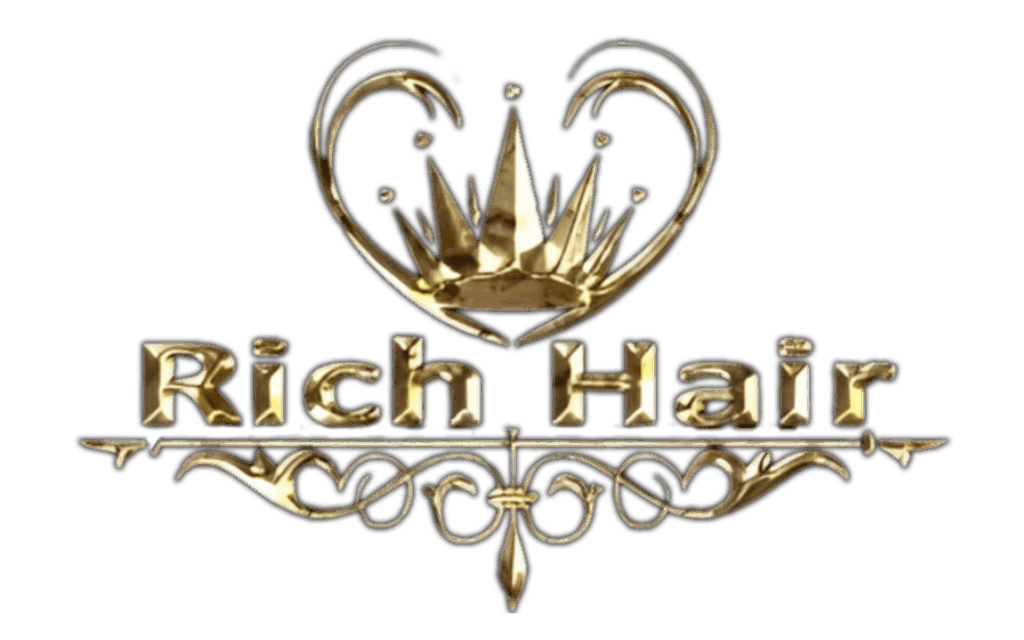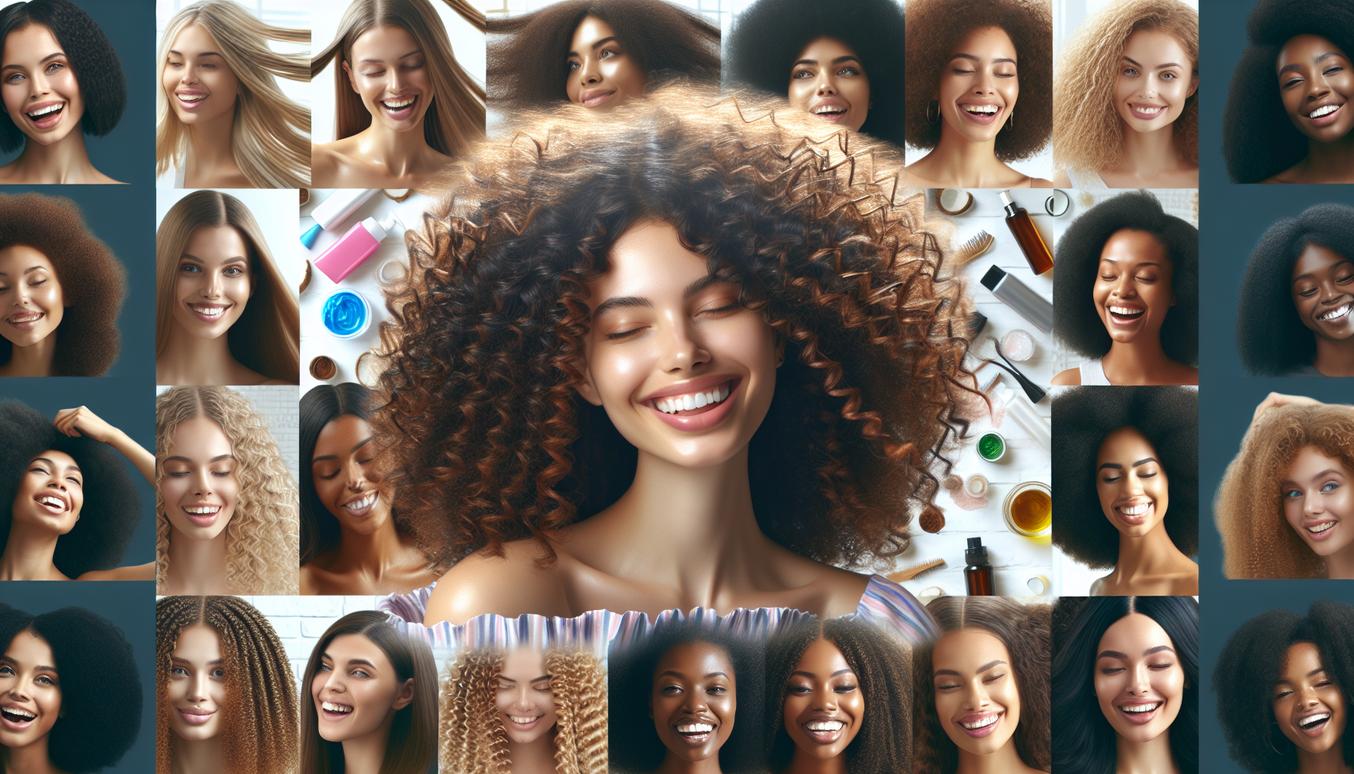Table of Contents
- Understanding Your Curl Pattern
- Daily Hydration Routine
- Cleansing Without Stripping
- Conditioning and Detangling Methods
- Styling for Definition and Longevity
- Nighttime Care and Protective Habits
- Nutrition and Supplements That Support Curls
- DIY Masks and Treatments
- Product Layering and Ingredient Primer
- Common Mistakes and How to Fix Them
Understanding Your Curl Pattern
Embracing your natural hair starts with understanding it. One of the most fundamental curly hair tips is to identify your unique curl pattern. Curls are generally categorised using a typing system that ranges from wavy (Type 2) to curly (Type 3) to coily (Type 4). Within each type, there are sub-categories (A, B, C) that describe the tightness of the curl.
- Type 2 (Wavy): These are bendable, S-shaped waves. 2A is fine and thin, 2B has more defined waves, and 2C features thick, well-defined S-bends that can verge on curls.
- Type 3 (Curly): This category features defined, springy curls. 3A curls are large and loose, 3B curls are springy ringlets, and 3C curls are tight, corkscrew-like strands.
- Type 4 (Coily): Characterised by tightly packed coils and zig-zag patterns. 4A has dense, S-patterned coils, 4B has a Z-shape with sharp angles, and 4C has the tightest coils with less definition.
Beyond the shape of your strands, understanding your hair’s porosity is crucial. Porosity determines how well your hair can absorb and retain moisture. Low porosity hair has tightly packed cuticles, making it hard for moisture to get in. High porosity hair has gaps in the cuticle, so it absorbs moisture easily but also loses it just as fast. Knowing your type and porosity helps you choose the right products and techniques for your specific needs.
Daily Hydration Routine
Hydration is the cornerstone of healthy, vibrant curls. Due to their shape, natural oils from the scalp have a harder time traveling down the hair shaft, making curly hair prone to dryness. A consistent hydration routine is essential.
Morning Refresh
Your curls may not need a full wash every day, but they almost always benefit from a moisture boost. In the mornings, you can revive your curls by lightly spritzing them with water from a spray bottle. You can also mix a small amount of leave-in conditioner with water in your spray bottle for an extra dose of hydration. After spritzing, gently scrunch your hair to encourage the curl clumps to reform. This is one of the quickest and most effective daily curly hair tips.
The L.O.C. or L.C.O. Method
For locking in moisture, especially on wash day, consider the LOC (Liquid, Oil, Cream) or LCO (Liquid, Cream, Oil) method. This layering technique helps seal moisture into the hair shaft for longer.
- Liquid: This is your hydration step, usually water or a water-based leave-in conditioner.
- Oil: An oil (like jojoba, argan, or sweet almond oil) helps to seal the moisture in.
- Cream: A curl cream provides further moisture and helps with styling and definition.
Experiment to see which order your hair prefers. Finer hair types may prefer LCO, while thicker, more porous hair often benefits from the LOC method.
Cleansing Without Stripping
Traditional shampoos containing harsh sulfates can strip curly hair of its essential natural oils, leading to dryness, frizz, and damage. The goal is to cleanse your scalp and hair without removing all that precious moisture. Here are some curl-friendly cleansing strategies for 2025 and beyond.
- Co-Washing: This involves washing your hair only with a cleansing conditioner. It’s gentle, hydrating, and ideal for those with very dry or delicate curls. You can co-wash several times a week.
- Sulfate-Free Shampoo (Low-Poo): If a co-wash doesn’t feel cleansing enough, a sulfate-free shampoo is an excellent alternative. It provides a gentle lather that cleans the scalp effectively without being overly stripping.
- Clarifying: Over time, products and natural oils can build up on your hair and scalp. Using a clarifying shampoo once a month helps to reset your hair, removing all buildup and allowing moisture to penetrate effectively again.
Listen to your hair. How often you cleanse depends on your lifestyle, scalp condition, and curl type. Some people wash once a week, while others may need to cleanse every few days.
Conditioning and Detangling Methods
Conditioner is a curly person’s best friend. It not only provides moisture but also the necessary “slip” to detangle knots without causing breakage. The right technique can make all the difference.
The “Squish to Condish” Technique
This method helps your hair absorb more moisture from your conditioner. After applying conditioner, cup your hands and “squish” sections of your hair up towards the scalp. You will hear a squishing sound as your hair absorbs the water and conditioner. This encourages curl clumping and deep hydration.
Safe Detangling Practices
The number one rule of detangling is to never brush curly hair when it’s dry. This will disrupt your curl pattern and cause frizz and breakage. Follow these steps for safe detangling:
- Apply a generous amount of conditioner to wet hair to create slip.
- Start from the ends and gently work your way up to the roots to remove tangles.
- Use your fingers (finger detangling) or a wide-tooth comb. Avoid fine-tooth combs.
- Be patient and work in small sections to minimise stress on the hair strands.
Styling for Definition and Longevity
How you apply your styling products is just as important as the products themselves. The goal is to encourage your natural curl pattern to form defined, frizz-free clumps that last for days.
Style on Soaking Wet Hair
For best results, apply your styling products to soaking wet hair, right after you’ve rinsed out your conditioner. This helps to lock in water, which is the ultimate moisturiser, and ensures the product is distributed evenly, preventing frizz before it can start.
Application Techniques
- Praying Hands: Rub the product between your palms and glide it down sections of your hair, with your hands in a “praying” position. This smooths the cuticle and encourages clumps.
- Raking: Use your fingers like a rake to distribute product from root to tip. This is great for ensuring full coverage but may separate clumps on finer hair.
- Scrunching: After applying products, gently scrunch your hair upwards towards the scalp. This helps to enhance your curl pattern and squeeze out excess water. Use a microfibre towel or an old t-shirt for scrunching to prevent frizz.
Drying Your Curls
Once your products are applied, you can either air-dry or use a diffuser. A diffuser attachment on your hairdryer disperses the airflow, which minimises frizz while drying your curls and adding volume. Use it on a low speed and low heat setting, gently “pixie diffusing” by holding it in place on sections of your hair.
Nighttime Care and Protective Habits
How you protect your hair while you sleep can make a massive difference in how it looks the next day. A good nighttime routine helps preserve your style, reduce frizz, and prevent tangles. This is one of the most overlooked but crucial curly hair tips for longevity.
- The “Pineapple”: Gather your hair into a very high, loose ponytail on top of your head, like a pineapple. This protects the length of your hair from being crushed while you sleep.
- Satin or Silk Protection: Cotton pillowcases absorb moisture from your hair and cause friction, leading to frizz and breakage. Switch to a satin or silk pillowcase. Alternatively, wear a satin bonnet, scarf, or cap to bed to protect your curls.
Nutrition and Supplements That Support Curls
Healthy hair starts from within. A balanced diet rich in specific vitamins and minerals provides the building blocks for strong, healthy hair growth. While products are important, you can’t ignore the foundation of good nutrition.
Key nutrients for hair health include:
- Biotin: Found in eggs, nuts, and whole grains, it helps with keratin production.
- Iron: Iron deficiency can be linked to hair loss. Find it in spinach, lentils, and red meat.
- Vitamin C: Crucial for collagen production and helps with iron absorption. Abundant in citrus fruits, bell peppers, and strawberries.
- Protein: Since hair is primarily made of protein, ensuring you get enough from sources like chicken, fish, beans, and tofu is vital.
- Omega-3 Fatty Acids: Found in fatty fish, flaxseeds, and walnuts, these support a healthy scalp.
For more detailed information, exploring a guide on curly hair nutrition can provide deeper insights into how your diet impacts your hair’s health and appearance.
DIY Masks and Treatments
You don’t always need expensive treatments to give your curls a boost. Your kitchen can be a source of incredible, all-natural ingredients for simple yet effective hair masks.
Moisture-Boosting Avocado Mask
Avocados are rich in fatty acids and vitamins that deeply moisturise and nourish the hair.
- Mash half of a ripe avocado.
- Mix in one tablespoon of olive oil or honey.
- Apply to clean, damp hair and leave on for 20-30 minutes.
- Rinse thoroughly and follow with your regular conditioner.
Strengthening Rice Water Rinse
Rice water contains inositol, which can penetrate damaged hair and repair it from the inside out. It’s a mild protein treatment, perfect for strengthening strands.
- Rinse half a cup of uncooked rice, then soak it in two cups of water for at least 30 minutes.
- Strain the rice, reserving the water.
- After shampooing, pour the rice water over your hair.
- Gently massage it into your scalp and hair, and leave it on for 15-20 minutes.
- Rinse out with cool water and apply conditioner.
Product Layering and Ingredient Primer
Understanding what’s in your products and how to layer them is an advanced curly hair tip that can elevate your routine. The general rule is to apply products from lightest to heaviest: start with water-based leave-ins, followed by creams, and finish with gels or mousses for hold.
Ingredients to Look For
- Humectants: Glycerin, Aloe Vera, Honey (attract moisture to the hair).
- Emollients: Shea Butter, Olive Oil, Jojoba Oil (smooth and soften the hair).
- Proteins: Hydrolyzed Keratin, Silk or Wheat Protein (strengthen the hair shaft).
Ingredients to Avoid
- Sulfates: Sodium Lauryl Sulfate (SLS), Sodium Laureth Sulfate (SLES) (harsh detergents that strip hair).
- Drying Alcohols: Alcohol Denat, Ethanol, Isopropyl Alcohol (can be very drying).
- Silicones (non-soluble): Dimethicone (can build up on hair, blocking moisture).
Common Mistakes and How to Fix Them
Navigating the world of curl care can involve some trial and error. Here are common pitfalls and how to correct them.
- Mistake: Using a terrycloth towel. The rough fibres create frizz and disrupt your curl pattern. Fix: Switch to a microfibre towel or an old cotton t-shirt to gently scrunch out excess water.
- Mistake: Applying products to damp or dry hair. This often leads to uneven application and frizz. Fix: Always apply your stylers to soaking wet hair for maximum hydration and definition.
- Mistake: Over-touching your hair while it dries. This can cause curls to separate and become frizzy. Fix: Adopt a “hands-off” policy until your hair is completely dry and the “cast” from your gel has formed. You can then gently “scrunch out the crunch” to reveal soft, defined curls.
Quick Routines for Busy Mornings
Not every day is a wash day, and sometimes you’re short on time. A quick refresh can bring your curls back to life in minutes.
- Spray and Scrunch: Lightly mist your hair with water or a curl refreshing spray. Focus on areas that are frizzy or have lost definition. Gently scrunch to reactivate your curls.
- Spot Treat: Identify any unruly or straight pieces. Wet that specific curl with your fingers, apply a tiny amount of cream or gel, and finger-coil it to retrain the shape.
- Scalp Shake: To revive volume at the roots, flip your hair upside down and gently shake it out from the roots with your fingertips.
Frequently Asked Curl Questions
How often should I wash my curly hair?
This varies greatly. Some people wash every 2-3 days, while others can go a full week. Listen to your hair and scalp. If your scalp is itchy or your curls feel weighed down, it’s time to cleanse.
Why is my hair always frizzy?
Frizz is often a sign that your hair is dehydrated and seeking moisture from the air. The key to fighting frizz is deep conditioning, using leave-in conditioners, and applying styling products to soaking wet hair to lock in moisture.
Can I ever brush my hair?
The only time you should use a tool to detangle is when your hair is wet and saturated with conditioner. A wide-tooth comb or a brush designed for wet detangling is best. Never, ever dry brush your curls.
Mastering your curls is a journey, not a destination. By understanding your hair’s unique properties and implementing these consistent, science-informed curly hair tips, you can achieve the healthy, defined, and beautiful curls you’ve always wanted. For more guidance, the experts at Rich Hair UK offer a wealth of knowledge to support your hair care journey.





